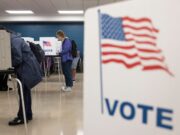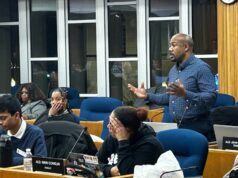
by Andy Balaskovitz for Energy News Network
A new report shows the solar workforce is mostly white and male, and that changes are needed to close diversity gaps.
The solar industry needs to adopt more inclusive recruiting practices in order to improve the workplace diversity of its largely white and male workforce, according to a report released Monday by two leading industry groups.
The 2019 U.S. Solar Industry Diversity Study is based on a national survey of nearly 800 solar employers and workers by the nonprofit Solar Foundation and the Solar Energy Industries Association.
The report shows little change from a 2017 edition. The percentage of women and non-white workers is comparable or slightly better than other energy, construction and manufacturing fields but worse than the U.S. workforce overall.
Among the report’s findings:
- Women (26%) and African Americans (8%) are the most underrepresented compared to the overall U.S. workforce.
- White men are significantly overrepresented in executive positions: 88% of senior executives are white; 80% are men.
- Women make 74 cents on the dollar compared to men, reflecting a similar gender pay gap nationally.
The burgeoning industry may be in a unique position to tackle the problem, said Solar Foundation President and Executive Director Andrea Luecke. The distributed nature of the technology means it can be built in all types of communities while involving dozens of different solar occupations, many of which don’t require higher education.
“This is a technology that has potential to reach into [a variety of communities] and potentially improve the livelihoods of people nationwide,” Luecke said.
Read more: Can legislation help diversify solar workforce? Illinois hopes so
Recruiting and tracking
The most common recruitment methods may contribute to the industry’s lack of diversity. Solar companies reported often relying on “professional or personal networks,” the study notes, which “can lead these companies to overlook candidates from diverse backgrounds or not spend the time to cast a wider net.” People of color were much less likely to find their positions through an employee referral or word of mouth.
Solar Foundation project manager Mary Van Leuven said solar being a “fairly new industry” with a large number of startups likely leads companies to hire those they know.
“They’re trying to fill many positions very quickly. It’s easier to just hire friends or the first people who knock on your door than to cast a wide net,” Luecke said. “It’s not that the industry is lazy, it’s that they’re already operating on razor-thin margins. It’s one of those things no one wants to deal with, and it hasn’t been dealt with in a meaningful way until now.”
The industry’s hiring practices particularly impact women of color, who reported a perceived need to provide more evidence of their competence compared to peers and not having the right connections.
“For women of color in solar, important activities that have helped them advance their careers include their professional networks and the female mentorships that have helped them move up the ladder,” the report says.
The Solar Foundation plans to partner with Historically Black Colleges and Universities to create a database of interested students and alumni to form a sort of employee pipeline.
But since recruiting within networks “isn’t going to end anytime soon,” Luecke said companies can incentivize employees for hiring others from more diverse backgrounds through the assistance of a recruitment agency like Bradsby Group.
Sunfolding, a San Francisco-based manufacturer of solar tracking equipment, gives employees a referral bonus for recommending new hires who identify as women, LGBTQ or an underrepresented minority in a STEM field.
“The trick is to broaden the network,” Luecke said, adding that a “blind resume process” that redacts identifying information could be another approach.
“If you’re not doing that as a company, you’re going to continue having these problems of not having a diverse workforce,” Luecke said.
Solar industry demographics compared to U.S. workforce Chart Interact 100% 80% 60% 40% 20% 0 Women Hispanic or Latino Asian Black or African American White Veterans 26.3% 46.9% 16.9% 16.9% 8.5% 6.2% 7.6% 12.1% 73.3% 78.4% 7.8% 6.6% Solar industry U.S. overall workforce Source: U.S. Solar Industry Diversity Study 2019 Infogram logo Share Embed Type:
Luecke added that the survey is meant to call attention to the issue and for companies to take action. Increasingly, that’s starting to happen.
In 2018, SEIAformally announced a commitment to diversity and inclusion at the organization and has created a best-practices guide for companies.
“I felt it was important to make this a public issue — to challenge others to stand up and account for the work they are doing,” SEIA president and CEO Abigail Ross Hopper said in a statement. “As leaders, we have a responsibility to create cultural change and address the systemic forces that have allowed discrimination to fester.”
Also last year, national developer Sunrun announced it had reached pay parityacross employees regardless of gender.
“Fair and equal pay for all genders and races is a fundamental human right and integral to the Sunrun ethos,” Sunrun CEO Lynn Jurich said at the time. “In the United States today, the workplace inequity that exists is unacceptable. On average, women are paid 80 cents on the dollar compared to men. Taking real action to address the issue is the right thing for our business, our communities, and our society.”
The report’s authors maintain that while the solar industry may mirror diversity problems across the U.S. economy, the first step in addressing the problem is recognition.
“It’s that self-reflection, acknowledging we have certain deficiencies and being committed to working toward it,” Luecke said. “It will make us a much stronger industry going forward.”

































